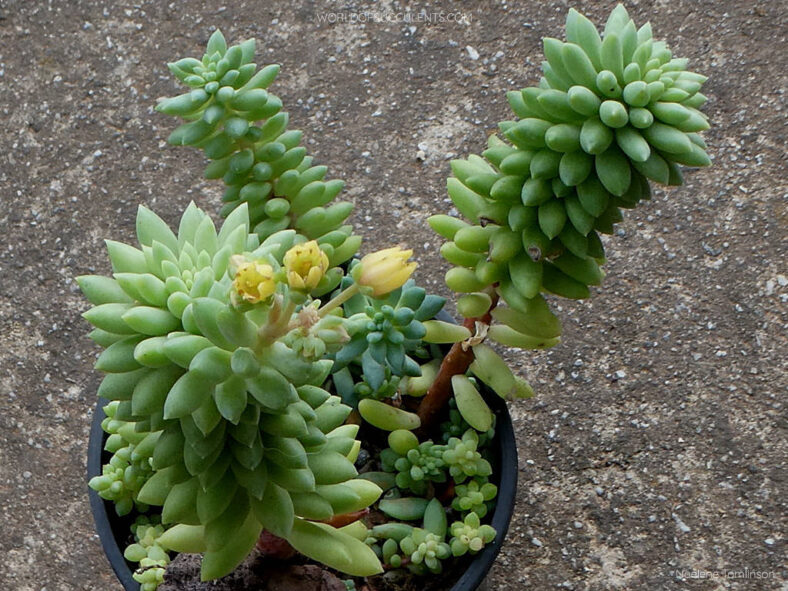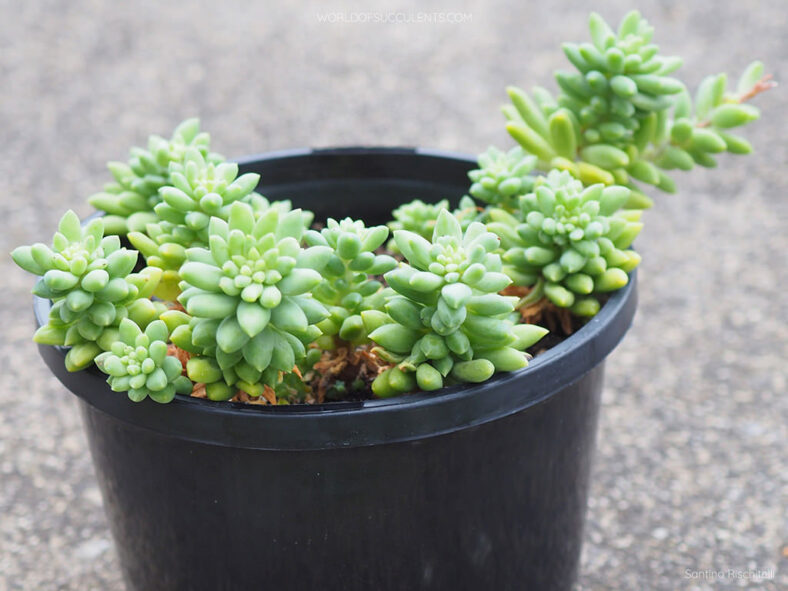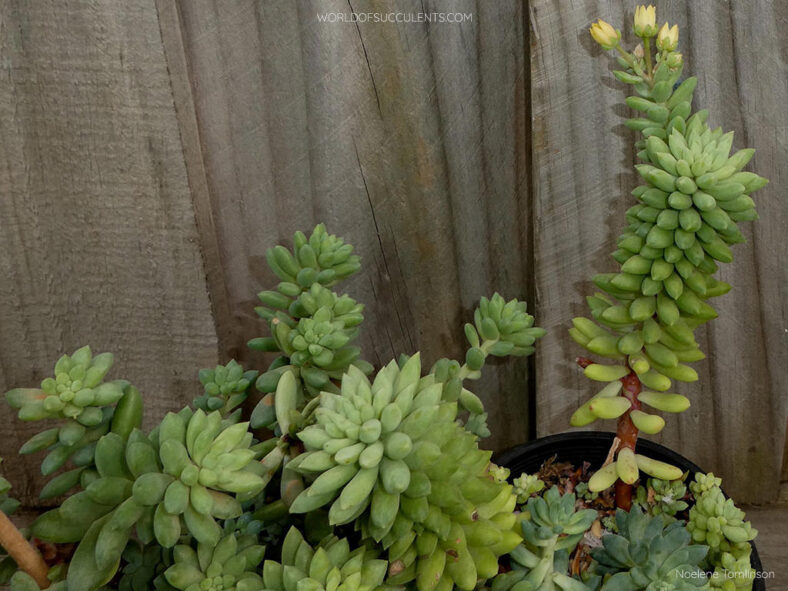Sedum 'Canny Hinny' is a chance hybrid that results from a cross between Sedum burrito and Sedum clavatum. It is also sold as Sedum 'Pink Berry', especially in Australia.
Scientific Name
Sedum 'Canny Hinny'
Synonym(s)
Sedum 'Pink Berry'
Scientific Classification
Family: Crassulaceae
Subfamily: Sempervivoideae
Tribe: Sedeae
Genus: Sedum
Origin
Sedum 'Canny Hinny' originates from Ray Stephenson's greenhouse in Newcastle Upon Tyne, England, United Kingdom. He first described this hybrid in the Sedum Society Newsletter No. 94, July 2010.
Description
Sedum 'Canny Hinny' is a beautiful succulent with pale green, slightly pruinose leaves densely packed on slender, trailing stems. The green, branched stems can grow over 12 inches (30 cm) long. The thick, fleshy leaves are slightly curved on top and can measure about 1.2 inches (3 cm) long. They can take on a reddish hue when exposed to full sunlight, particularly at the tips. The leaves are quite firmly attached to the stem and typically do not fall off every time the plant is moved, unlike its parent Sedum burrito.
In the spring, Sedum 'Canny Hinny' produces clusters of yellow flowers, sometimes tinged with red, on short stalks at the end of the stems.

How to Grow and Care for Sedum 'Canny Hinny'
Light: Sufficient light is essential for growing a healthy plant. Sedum 'Canny Hinny' grows best in locations where it enjoys the full sun for at least six hours daily but tolerates some shade. Place the plant near a sunny window or use artificial lights when growing indoors.
Soil: This plant does not like to sit in waterlogged soil, so drainage is essential to prevent root rot. Use a commercially available mix for succulents, or create your own.
Temperature: Sedum 'Canny Hinny' can tolerate high and low temperatures, making it an excellent choice for various climates. It grows best in USDA Plant Hardiness Zones 10a to 11b, with average minimum winter temperatures ranging from 30 to 50 °F (-1.1 to 10 °C).
Watering: From spring through fall, water thoroughly and wait for the soil to dry out before watering again. During the winter, water the plant just enough to keep it from shriveling. When watering, avoid wetting the leaves, stems, and flowers.
Fertilizing: Feed a water-soluble fertilizer diluted to half the recommended strength during the growing season. However, feeding is unnecessary if you provide the plant with fresh soil annually.
Repotting: When Sedum 'Canny Hinny' outgrows its current pot, repot it into a larger one during the spring. Make sure the soil is dry before you begin repotting.
Propagation: It is easy to propagate Sedum 'Canny Hinny' by taking leaf or stem cuttings during the growing season.
Learn more at How to Grow and Care for Sedum.
Toxicity of Sedum 'Canny Hinny'
Sedum 'Canny Hinny' is not listed as toxic for people but can be mildly toxic to pets and children.
Links
- Back to genus Sedum
- Succupedia: Browse succulents by Scientific Name, Common Name, Genus, Family, USDA Hardiness Zone, Origin, or cacti by Genus
Photo Gallery
Click on a photo to see a larger version.


